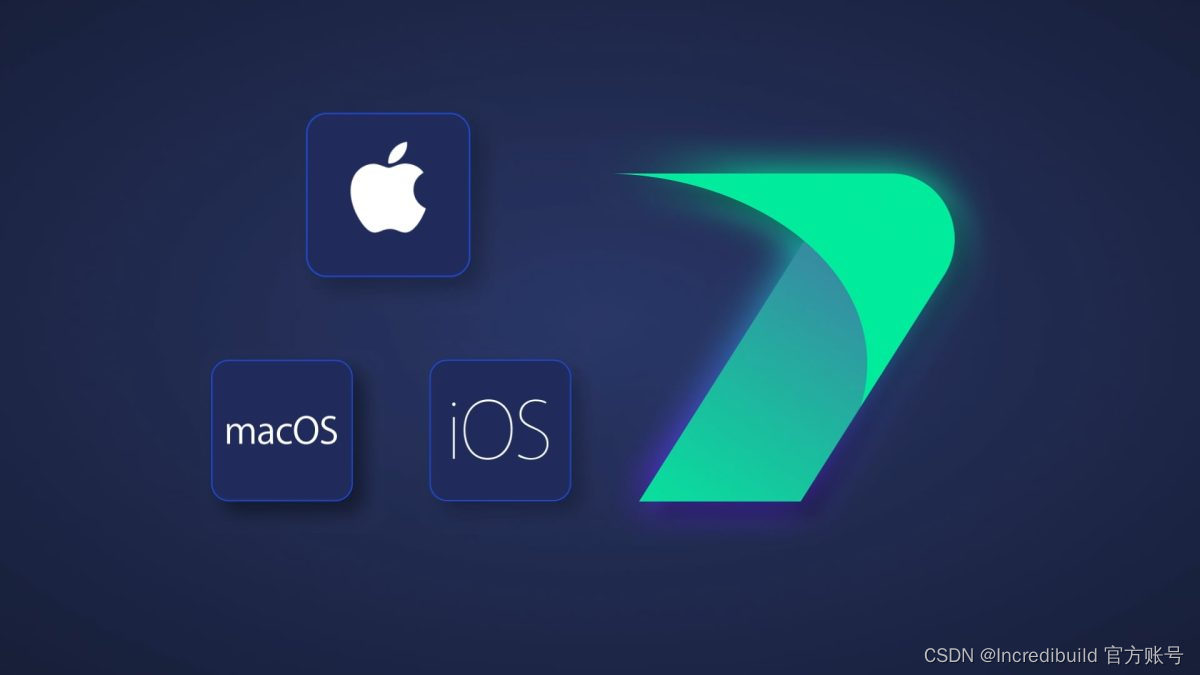找工作小项目:day15-macOS支持、完善逻辑
macOS支持、完善逻辑
目前的代码可以在Linux上完美运行编译,在Windows上也可以通过WSL编译运行源代码,但是在MacBook上却无法运行编译,这主要是由于macOS上没有epoll,取而代之的很相似的kqueue。由于操作系统不同,我们需要的是在面向操作系统即从用户态向内核态转变时进行修改。目前我们面向这一过程的仅有Epoll,所以在面向不同操作系统的过程中仅需要关心这部分。
为了完善逻辑处理机制,即将不同事件类型进行不同的注册,事件注册在Channel中完成,因为之前是在Channel对不同事件的回调函数进行设置的。
1、错误检测机制
2、Macros(宏定义,去除类移动和复制)
3、Socket(创建地址和socket)
4、Epoll->Poller(事件注册分发从以及红黑树上删除)
声明部分就可以很直观地看出来,两者同属一系,仅仅是多了一部分适用于macOS的定义。
//Epoll
#include "Macros.h"
#include
#ifdef OS_LINUX
#include
#endif
class Channel;
class Epoll {
public:
Epoll();
~Epoll();
DISALLOW_COPY_AND_MOVE(Epoll);
void UpdateChannel(Channel *ch);
void DeleteChannel(Channel *ch);
std::vector<Channel *> Poll(int timeout = -1);
private:
int epfd_{1};
struct epoll_event *events_{nullptr};
};
//Poller
#include "Macros.h"
#ifdef OS_LINUX
#include
#endif
#ifdef OS_MACOS
#include
#endif
class Channel;
class Poller {
public:
Poller();
~Poller();
DISALLOW_COPY_AND_MOVE(Poller);
void UpdateChannel(Channel *ch);
void DeleteChannel(Channel *ch);
std::vector<Channel *> Poll(int timeout = -1);
private:
int fd_{1};
#ifdef OS_LINUX
struct epoll_event *events_{nullptr};
#endif
#ifdef OS_MACOS
struct kevent *events_{nullptr};
#endif
};
为了完善逻辑,能够为不同事件类型注册不同的事件处理方式,这里采用标志位的方案进行设置,由于多了一种系统所以代码量会多出一倍,这是因为需要对在macOS系统下也进行定义。
在poll中对就绪事件进行分发,利用Channel能够在使用fd的同时获得事件的处理方式。
std::vector<Channel *> Poller::Poll(int timeout) {
std::vector<Channel *> active_channels;
int nfds = epoll_wait(fd_, events_, MAX_EVENTS, timeout);
ErrorIf(nfds == -1, "epoll wait error");
for (int i = 0; i < nfds; ++i) {
Channel *ch = (Channel *)events_[i].data.ptr;
int events = events_[i].events;
if (events & EPOLLIN) {
ch->SetReadyEvents(Channel::READ_EVENT);
}
if (events & EPOLLOUT) {
ch->SetReadyEvents(Channel::WRITE_EVENT);
}
if (events & EPOLLET) {
ch->SetReadyEvents(Channel::ET);
}
active_channels.push_back(ch);
}
return active_channels;
}
之后是对Channel中的监听事件类型标志位进行设置,如果事件标志位判断为真则将该事件设置成对应标志,注意是对红黑树树上的通道进行设置,不在树上都需要放到树上。
注意就绪事件和监听事件之间的关系,
注册监听:程序首先通过 listen_events_ 向内核注册自己感兴趣的事件。
内核监控:内核不断监控这些事件,并在事件发生时通知程序。
事件就绪:当内核检测到某些事件发生时,会将这些事件标记为就绪,并通过 I/O 多路复用机制返回给应用程序。
处理事件:程序读取 ready_events_,了解具体哪些事件已发生,然后进行相应的处理。
void Poller::UpdateChannel(Channel *ch) {
int sockfd = ch->GetSocket()->GetFd();
struct epoll_event ev {};
ev.data.ptr = ch;
if (ch->GetListenEvents() & Channel::READ_EVENT) {
ev.events |= EPOLLIN | EPOLLPRI;
}
if (ch->GetListenEvents() & Channel::WRITE_EVENT) {
ev.events |= EPOLLOUT;
}
if (ch->GetListenEvents() & Channel::ET) {
ev.events |= EPOLLET;
}
if (!ch->GetExist()) {
ErrorIf(epoll_ctl(fd_, EPOLL_CTL_ADD, sockfd, &ev) == -1, "epoll add error");
ch->SetExist();
} else {
ErrorIf(epoll_ctl(fd_, EPOLL_CTL_MOD, sockfd, &ev) == -1, "epoll modify error");
}
}
在macOS系统上的差别不大,主要是函数的使用不同,需要注意一下。
#ifdef OS_MACOS
Poller::Poller() {
fd_ = kqueue();
ErrorIf(fd_ == -1, "kqueue create error");
events_ = new struct kevent[MAX_EVENTS];
memset(events_, 0, sizeof(*events_) * MAX_EVENTS);
}
Poller::~Poller() {
if (fd_ != -1) {
close(fd_);
}
}
std::vector<Channel *> Poller::Poll(int timeout) {
std::vector<Channel *> active_channels;
struct timespec ts;
memset(&ts, 0, sizeof(ts));
if (timeout != -1) {
ts.tv_sec = timeout / 1000;
ts.tv_nsec = (timeout % 1000) * 1000 * 1000;
}
int nfds = 0;
if (timeout == -1) {
nfds = kevent(fd_, NULL, 0, events_, MAX_EVENTS, NULL);
} else {
nfds = kevent(fd_, NULL, 0, events_, MAX_EVENTS, &ts);
}
for (int i = 0; i < nfds; ++i) {
Channel *ch = (Channel *)events_[i].udata;
int events = events_[i].filter;
if (events == EVFILT_READ) {
ch->SetReadyEvents(ch->READ_EVENT | ch->ET);
}
if (events == EVFILT_WRITE) {
ch->SetReadyEvents(ch->WRITE_EVENT | ch->ET);
}
active_channels.push_back(ch);
}
return active_channels;
}
void Poller::UpdateChannel(Channel *ch) {
struct kevent ev[2];
memset(ev, 0, sizeof(*ev) * 2);
int n = 0;
int fd = ch->GetSocket()->GetFd();
int op = EV_ADD;
if (ch->GetListenEvents() & ch->ET) {
op |= EV_CLEAR;
}
if (ch->GetListenEvents() & ch->READ_EVENT) {
EV_SET(&ev[n++], fd, EVFILT_READ, op, 0, 0, ch);
}
if (ch->GetListenEvents() & ch->WRITE_EVENT) {
EV_SET(&ev[n++], fd, EVFILT_WRITE, op, 0, 0, ch);
}
int r = kevent(fd_, ev, n, NULL, 0, NULL);
ErrorIf(r == -1, "kqueue add event error");
}
void Poller::DeleteChannel(Channel *ch) {
struct kevent ev[2];
int n = 0;
int fd = ch->GetSocket()->GetFd();
if (ch->GetListenEvents() & ch->READ_EVENT) {
EV_SET(&ev[n++], fd, EVFILT_READ, EV_DELETE, 0, 0, ch);
}
if (ch->GetListenEvents() & ch->WRITE_EVENT) {
EV_SET(&ev[n++], fd, EVFILT_WRITE, EV_DELETE, 0, 0, ch);
}
int r = kevent(fd_, ev, n, NULL, 0, NULL);
ErrorIf(r == -1, "kqueue delete event error");
}
#endif
5、Channel(根据fd设置对应回调函数并调用,包括了事件标志位)
今天Channel将正式开始处理不同类型的事件,通过上面Poller的事件类型的设置将通过判断进行不同的工作,调用不同的函数。
声明部分多出了EnableWrite、SetWriteCallback方法,正式将写回调函数用上了。
class Socket;
class EventLoop;
class Channel {
public:
Channel(EventLoop *loop, Socket *socket);
~Channel();
DISALLOW_COPY_AND_MOVE(Channel);
void HandleEvent();
void EnableRead();
void EnableWrite();
Socket *GetSocket();
int GetListenEvents();
int GetReadyEvents();
bool GetExist();
void SetExist(bool in = true);
void UseET();
void SetReadyEvents(int ev);
void SetReadCallback(std::function<void()> const &callback);
void SetWriteCallback(std::function<void()> const &callback);
static const int READ_EVENT; // NOLINT
static const int WRITE_EVENT; // NOLINT
static const int ET; // NOLINT
private:
EventLoop *loop_;
Socket *socket_;
int listen_events_{0};
int ready_events_{0};
bool exist_{false};
std::function<void()> read_callback_;
std::function<void()> write_callback_;
};
在实现中,从析构函数就发生了变化,现在由EventLoop进行事件的回收工作,而不是像之前一样将fd置为-1;
const int Channel::READ_EVENT = 1;
const int Channel::WRITE_EVENT = 2;
const int Channel::ET = 4;
Channel::Channel(EventLoop *loop, Socket *socket) : loop_(loop), socket_(socket) {}
Channel::~Channel() { loop_->DeleteChannel(this); }
在调用回调函数的方法上没发生什么变化,只不过有了标志位不再需要之前更靠近底层的判断方式。
void Channel::HandleEvent() {
if (ready_events_ & READ_EVENT) {
read_callback_();
}
if (ready_events_ & WRITE_EVENT) {
write_callback_();
}
}
根据事件的标志位将树上的通道中的处理方式进行更新。
void Channel::EnableRead() {
listen_events_ |= READ_EVENT;
loop_->UpdateChannel(this);
}
void Channel::EnableWrite() {
listen_events_ |= WRITE_EVENT;
loop_->UpdateChannel(this);
}
void Channel::UseET() {
listen_events_ |= ET;
loop_->UpdateChannel(this);
}
获取设置一些基础信息,包括将就绪事件的标志位设置为对应处理方式。
Socket *Channel::GetSocket() { return socket_; }
int Channel::GetListenEvents() { return listen_events_; }
int Channel::GetReadyEvents() { return ready_events_; }
bool Channel::GetExist() { return exist_; }
void Channel::SetExist(bool in) { exist_ = in; }
void Channel::SetReadyEvents(int ev) {
if (ev & READ_EVENT) {
ready_events_ |= READ_EVENT;
}
if (ev & WRITE_EVENT) {
ready_events_ |= WRITE_EVENT;
}
if (ev & ET) {
ready_events_ |= ET;
}
}
void Channel::SetReadCallback(std::function<void()> const &callback) { read_callback_ = callback; }
void Channel::SetWriteCallback(std::function<void()> const &callback) { write_callback_ = callback; }
6、EventLoop(对树上的通道进行轮询)
在事件处理的类中多了对通道回收的操作并多了一个Quit方法。
#include "Macros.h"
#include
class Poller;
class Channel;
class EventLoop {
public:
EventLoop();
~EventLoop();
DISALLOW_COPY_AND_MOVE(EventLoop);
void Loop();
void UpdateChannel(Channel *ch);
void DeleteChannel(Channel *ch);
void Quit();
private:
Poller *poller_{nullptr};
bool quit_{false};
};
quit_标志位作用不清楚,而DeleteChannel是调用poller中的deleteChannel方法完成的,这是因为由于不同系统中poller的对于并发Epoll库方法不同。
7、Acceptor(创建连接)
8、Connection(连接上发生的事件)
声明中State枚举类型中将Handshaking转变为了Connecting(从握手变成连接中…),多了Send、SetOnMessageCallback、Business、OnMessage以及on_message_callback_回调函数。
class EventLoop;
class Socket;
class Channel;
class Buffer;
class Connection {
public:
enum State {
Invalid = 1,
Connecting,
Connected,
Closed,
Failed,
};
Connection(EventLoop *loop, Socket *sock);
~Connection();
DISALLOW_COPY_AND_MOVE(Connection);
void Read();
void Write();
void Send(std::string msg);
void SetDeleteConnectionCallback(std::function<void(Socket *)> const &callback);
void SetOnConnectCallback(std::function<void(Connection *)> const &callback);
void SetOnMessageCallback(std::function<void(Connection *)> const &callback);
void Business();
State GetState();
void Close();
void SetSendBuffer(const char *str);
Buffer *GetReadBuffer();
const char *ReadBuffer();
Buffer *GetSendBuffer();
const char *SendBuffer();
void GetlineSendBuffer();
Socket *GetSocket();
void OnConnect(std::function<void()> fn);
void OnMessage(std::function<void()> fn);
private:
EventLoop *loop_;
Socket *sock_;
Channel *channel_{nullptr};
State state_{State::Invalid};
Buffer *read_buffer_{nullptr};
Buffer *send_buffer_{nullptr};
std::function<void(Socket *)> delete_connectioin_callback_;
std::function<void(Connection *)> on_connect_callback_;
std::function<void(Connection *)> on_message_callback_;
void ReadNonBlocking();
void WriteNonBlocking();
void ReadBlocking();
void WriteBlocking();
};
从实现上看看发生了那些改变,注意在ReadNonBlocking中开始在连接断开的情况下内部调用Close而在昨天的项目中是在测试程序中进行的调用。
在这多出来的实现中,为外部设置了写数据的接口,封装更为简单的对外接口。SetOnMessageCallback设置on_message_callback_ 并进行回显调用
void Connection::Send(std::string msg){
SetSendBuffer(msg.c_str());
Write();
}
void Connection::Business(){
Read();
on_message_callback_(this);
}
void Connection::SetOnMessageCallback(std::function<void(Connection *)> const &callback) {
on_message_callback_ = callback;
std::function<void()> bus = std::bind(&Connection::Business, this);
channel_->SetReadCallback(bus);
}
9、Buffer(缓冲区,用以存放双工过程中发送的数据)
10、ThreadPool(线程池,用以管理复用线程)
11、服务器类
从声明来看是将回显、新建连接进行了封装
class EventLoop;
class Socket;
class Acceptor;
class Connection;
class ThreadPool;
class Server {
private:
EventLoop *main_reactor_;
Acceptor *acceptor_;
std::map<int, Connection *> connections_;
std::vector<EventLoop *> sub_reactors_;
ThreadPool *thread_pool_;
std::function<void(Connection *)> on_connect_callback_;
std::function<void(Connection *)> on_message_callback_;
std::function<void(Connection *)> new_connect_callback_;
public:
explicit Server(EventLoop *loop);
~Server();
DISALLOW_COPY_AND_MOVE(Server);
void NewConnection(Socket *sock);
void DeleteConnection(Socket *sock);
void OnConnect(std::function<void(Connection *)> fn);
void OnMessage(std::function<void(Connection *)> fn);
void NewConnect(std::function<void(Connection *)> fn);
};




![[Linux]内网穿透nps](/images/2024/0609/a4e90d22aa420a30736b44be409aced3.png)